水中糖精钠溶液标准物质,1000μg/mL
产品编号:西域质检-TM11702| CAS NO:128-44-9| 分子式:C7H4NNaO3S| 分子量:205.166
本网站销售的所有产品仅用于工业应用或者科学研究等非医疗目的,不可用于人类或动物的临床诊断或者治疗,非药用,非食用,
水中糖精钠溶液标准物质
本标准物质主要用于测量仪器校准,分析方法评价和质量控制,以及食品,卫生,环境和农业等领域相应成分含量测定与残留检测,也可用于量值溯源或作为标准储备溶液,通过逐级稀释配制成各种工作用标准溶液等。
本标准物质以纯度经准确定值的糖精钠纯品为原料,以一级水为溶剂,采用重量-容量法准确配制而成。
糖精钠,英文名称: Saccharin Sodium,CAS No. : 128-44-9
*注: 1、糖精钠标准值以C6H4CONNaSO2计;2、糖精标准值以C7H5O3NS计
本标准物质以配制值作为标准值,采用高效液相色谱法-二极管阵列检测器(HPLC-DAD)对本批次标准物质和质量控制对照样品进行比对,核验配制值。通过使用满足计量学特性要求的制备方法,测量方法和计量器具,保证标准物质的量值溯源性。
| 编号 | 名称 | 标准值(μg/mL) | 相对扩展不确定度(%)(k=2) |
| GBW(E)082261 | 糖精钠 | 1000 | 2 |
| 糖精 | 893 | 2 |
标准值的不确定度综合考虑了原料纯度定值结果,制备过程,量值核验以及均匀性,稳定性等引入的不确定度分量。
依据JJF1343-2022《标准物质的定值及均匀性、稳定性评估》,采用高效液相色谱法-二极管阵列检测器(HPLC-DAD)按照随机抽样原则对本标准物质进行均匀性评估,评估结果表明,样品均匀性良好;采用相同测量方法进行稳定性评估,评估结果表明,样品稳定性良好。
本标准物质量值自定值日期起,有效期12个月, 研制单位将继续跟踪监测该标准物质的稳定性,有效期内如发现量值变化,将及时通知用户。
1、包装:本标准物质采用硼硅酸盐玻璃安瓿瓶包装,约10mL/支,移取或稀释时请以移液管量取为准。
2、贮存:运输时应避免挤压,碰撞;冷冻(-18±5)℃,置于阴凉处贮存。
3、使用:启封前于室温(20±3)℃平衡,并充分摇匀。安瓿瓶一经打开,应立即使用,不可再次熔封后作为标准物质使用。
相关文档
化学品安全说明书(MSDS)
下载MSDS质检证书(COA)
相关产品
| 安全声明 (欧洲) | S24/25 |
|---|---|
| WGK德国 | 2 |
| RTECS号 | DE4550000 |
| 海关编码 | 2925110000 |
Synonym:Sodium saccharin; 1,2-Benzisothiazol-3(2H)-one, 1,1-dioxide, sodium salt; Saccharin, sodium salt; Saccharin soluble Section 2 - COMPOSITION, INFORMATION ON INGREDIENTS
Risk Phrases: None Listed. Section 3 - HAZARDS IDENTIFICATION EMERGENCY OVERVIEW
Not available. Potential Health Effects Eye: May cause eye irritation. Skin: Low hazard for usual industrial handling. Ingestion: The toxicological properties of this substance have not been fully investigated. Inhalation: Inhalation of dust may cause respiratory tract irritation. Chronic: Several studies in rats & mice have linked sodium saccharin to bladder tumors, but the mechanism believed to induce cancer in those animals does not appear to occur in humans. Rats & mice have a different urinary pH than do humans. Section 4 - FIRST AID MEASURES Eyes: Flush eyes with plenty of water for at least 15 minutes, occasionally lifting the upper and lower eyelids. Get medical aid. Skin: Flush skin with plenty of water for at least 15 minutes while removing contaminated clothing and shoes. Get medical aid if irritation develops or persists. Ingestion: Get medical aid if irritation or symptoms occur. Inhalation: Remove from exposure and move to fresh air immediately. Get medical aid if cough or other symptoms appear. Notes to Physician: Section 5 - FIRE FIGHTING MEASURES General Information: As in any fire, wear a self-contained breathing apparatus in pressure-demand, MSHA/NIOSH (approved or equivalent), and full protective gear. Extinguishing Media: Use water spray, dry chemical, carbon dioxide, or chemical foam. Section 6 - ACCIDENTAL RELEASE MEASURES General Information: Use proper personal protective equipment as indicated in Section 8. Spills/Leaks: Vacuum or sweep up material and place into a suitable disposal container. Avoid generating dusty conditions. Provide ventilation. Section 7 - HANDLING and STORAGE Handling: Use with adequate ventilation. Minimize dust generation and accumulation. Avoid contact with skin and eyes. Avoid ingestion and inhalation. Storage: Store in a tightly closed container. Store in a cool, dry, well-ventilated area away from incompatible substances. Section 8 - EXPOSURE CONTROLS, PERSONAL PROTECTION Engineering Controls: Good general ventilation should be sufficient to control airborne levels. Exposure Limits CAS# 128-44-9: Personal Protective Equipment Eyes: Wear appropriate protective eyeglasses or chemical safety goggles as described by OSHA's eye and face protection regulations in 29 CFR 1910.133 or European Standard EN166. Skin: Wear appropriate protective gloves to prevent skin exposure. Clothing: Wear appropriate protective clothing to minimize contact with skin. Respirators: Follow the OSHA respirator regulations found in 29 CFR 1910.134 or European Standard EN 149. Use a NIOSH/MSHA or European Standard EN 149 approved respirator if exposure limits are exceeded or if irritation or other symptoms are experienced. Section 9 - PHYSICAL AND CHEMICAL PROPERTIES Physical State: Solid Color: white Odor: none reported pH: Not available. Vapor Pressure: Not available. Viscosity: Not available. Boiling Point: Not available. Freezing/Melting Point: Not available. Autoignition Temperature: Not applicable. Flash Point: Not applicable. Explosion Limits, lower: Not available. Explosion Limits, upper: Not available. Decomposition Temperature: Not available. Solubility in water: Freely Soluble. Specific Gravity/Density: Not available. Molecular Formula: C7H4O3NSNa Molecular Weight: 205.17 Section 10 - STABILITY AND REACTIVITY Chemical Stability: Stable under normal temperatures and pressures. Conditions to Avoid: Dust generation. Incompatibilities with Other Materials: Strong oxidizing agents. Hazardous Decomposition Products: Nitrogen oxides, carbon monoxide, oxides of sulfur, carbon dioxide, toxic fumes of sodium oxide. Hazardous Polymerization: Has not been reported. Section 11 - TOXICOLOGICAL INFORMATION RTECS#: CAS# 128-44-9: DE4550000 LD50/LC50: CAS# 128-44-9: Oral, mouse: LD50 = 17500 mg/kg; Oral, rat: LD50 = 14200 mg/kg. Carcinogenicity: Sodium saccharin - Not listed by ACGIH, IARC, or NTP. Other: See actual entry in RTECS for complete information. Section 12 - ECOLOGICAL INFORMATION Ecotoxicity: The product is chemically identical to the natural amino acid L-Serine and can therefore can be degraded microbiologically. Section 13 - DISPOSAL CONSIDERATIONS Products which are considered hazardous for supply are classified as Special Waste and the disposal of such chemicals is covered by regulations which may vary according to location. Contact a specialist disposal company or the local waste regulator for advice. Empty containers must be decontaminated before returning for recycling. Section 14 - TRANSPORT INFORMATION IATA Shipping Name: Not regulated. Hazard Class: UN Number: Packing Group: IMO Shipping Name: Not regulated. Hazard Class: UN Number: Packing Group: RID/ADR Shipping Name: Not regulated. Hazard Class: UN Number: Packing group: Section 15 - REGULATORY INFORMATION European/International Regulations European Labeling in Accordance with EC Directives Hazard Symbols: Not available. Risk Phrases: Safety Phrases: WGK (Water Danger/Protection) CAS# 128-44-9: 0 Canada CAS# 128-44-9 is listed on Canada's DSL List. CAS# 128-44-9 is not listed on Canada's Ingredient Disclosure List. US FEDERAL TSCA CAS# 128-44-9 is listed on the TSCA inventory. SECTION 16 - ADDITIONAL INFORMATION N/A |
|
~% 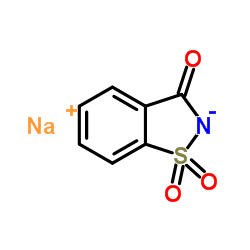
128-44-9 |
| 文献:US5374738 A1, ; |
| 上游产品 1 | |
|---|---|
| 下游产品 10 | |



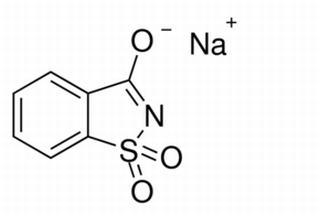

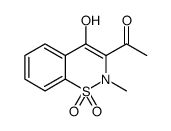
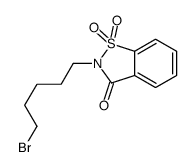


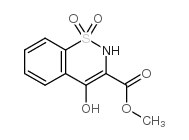
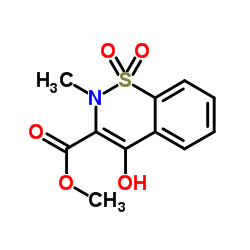
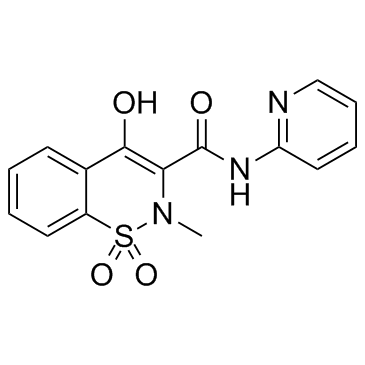
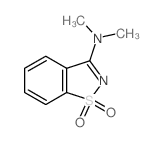
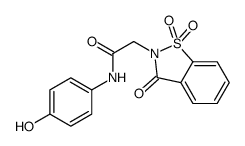






 浙公网安备 33010802013016号
浙公网安备 33010802013016号